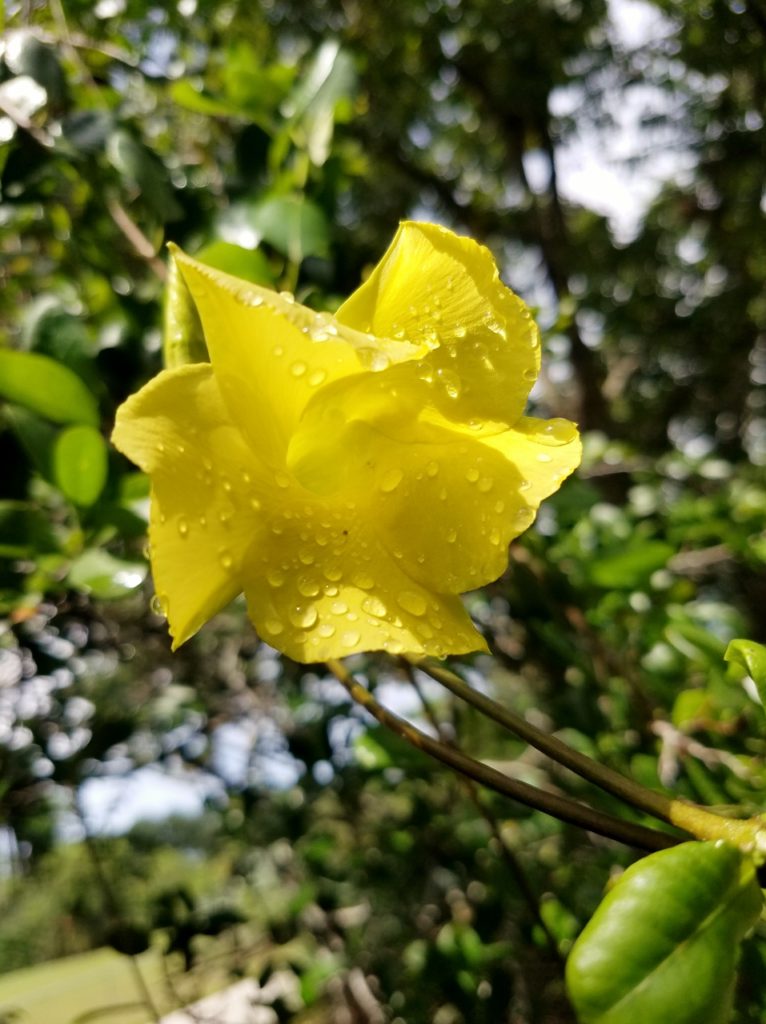
Wild Allamanda
Pentalinon luteum
Our native Wild Allamanda is a vine with opposite, oval leaves and two inch yellow flowers produced from June to Fall. The vines can grow twelve or more feet long, yet will be bushier if cut back.
Do not confuse this with the Yellow Allamanda sold in stores which is bushy and native to South America. Click here for more information.
Our native Allamanda is found from the coastline of St. Lucie County through the Florida Keys. It is very tolerant of salt air and drought and prefers dry soil and full sun. Moist soil is tolerated, yet not needed. It does very well inland on a trellis or other support.
Since it is in the Oleander Family, Apocynaceae, it should not be eaten and the sap should be washed off immediately or skin irritation will occur. Keep kids away from it.
The polka-dot wasp moth larva eats the leaves. This is orange with soft hairs. The adult is the same moth seen laying eggs on oleander and mimics a spider wasp with an orange abdomen and blue wings. Funny how the scape moth up north and the atala hairstreak butterfly also have this natural warning color combination.
If you are looking for a vine that will cover a trellis or shrubs and trees on the south edge of a planting, this is one of the best. I have one that has grown up into a Gumbo Limbo and pours down with many yellow flowers. This makes the Gumbo look like it has yellow flowers.
Wild Allamanda occurs on the edge of salt marshes in the Keys and among the Saw Palmetto, Redbay and other plants just back of the dune as you travel north to St. Lucie County. I have also seen it in the shady parts of Boynton Hammock, yet there are few flowers in low light.
For more info click here, and here.